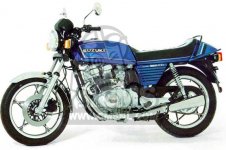The bike always had a ****ty idle where sometimes if I didn't just always give it throttle it would die. Last week I was riding and came to a stop, I turned off my bike but it wouldn't start back up, it didn't even sound like it was trying. I left it parked for 30 minutes and when I went to try again it started right up and I rode home. On my way home the bike randomly started to slow down until a stop and it failed. It wouldn't start up at all again and hasn't really since.
I've charged the battery, replaced the spark plugs, taken apart and cleaned the carb but still nothing. The engine turns and turns but never ignites. There spark plugs produce a spark but it looks like the spark on the right cylinder has oil fouling on it, even though it's brand new.
Last but not least, every once in a while with the choke open the bike will start for a second - even yesterday I was able to ride it around the block but as soon as I came to a stop it failed again. That was the only time I've been able to ride it since it first failed.
Sorry for the long winded post, I'm new to biking and literally just picked this up in October.
Any advice would help, thanks!
.png)




Comment